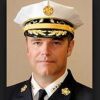Editor’s note: With an article from The Chicago Daily Herald reporting how a burn building recently tested future fire captains’ reflexes, check out Editorial Advisor Chief Adam K. Thiel’s perspective below.
This article on the Carpentersville Fire Department reinforces two key themes for the fire and emergency services:
1. The importance of safely conducting live-burn training evolutions in acquired structures (or anywhere else) according to established standards.
2. The value of putting promotional candidates in realistic scenarios to evaluate and assess their performance under conditions that closely approximate the job(s) for which they are competing.
Unfortunately, too many firefighters have been killed or injured through the years while participating in live-fire training; these casualties have occurred in both acquired structures and specially-constructed burn buildings.
It’s important to remember that a controlled burn is just as hot as an unwanted fire; the chemistry and physics of combustion are unthinking, unfeeling, and really don’t care that you’re just doing training.
To avoid repeating past tragedies, live-burn training should always be performed in strict accordance with the NFPA 1403 Standard on Live Fire Training Evolutions, available from www.nfpa.org.
Career or volunteer, full- or part-time, it’s critical that firefighters and their officers at all levels are properly trained and evaluated.
Fire and emergency service organizations use many different methods for training, evaluating, and promoting firefighters through the ranks.
In many departments, this takes the form of written/oral examinations and/or assessment centers.
While there is no generally accepted national standard for conducting a promotional process — and in some cases the existing procedures are set in state/local laws, regulations, and ordinances — the use of realistic scenarios for assessing candidates is certainly emerging as a best practice.
Despite the added costs and logistical challenges, the benefits of testing performance under simulated conditions are obvious.
This kind of evaluation has been used for many decades in other high-risk occupations, especially the aviation community.
Would you be comfortable flying on a commercial airline where a captain’s first flight in the left seat might be yours? I wouldn’t ...


